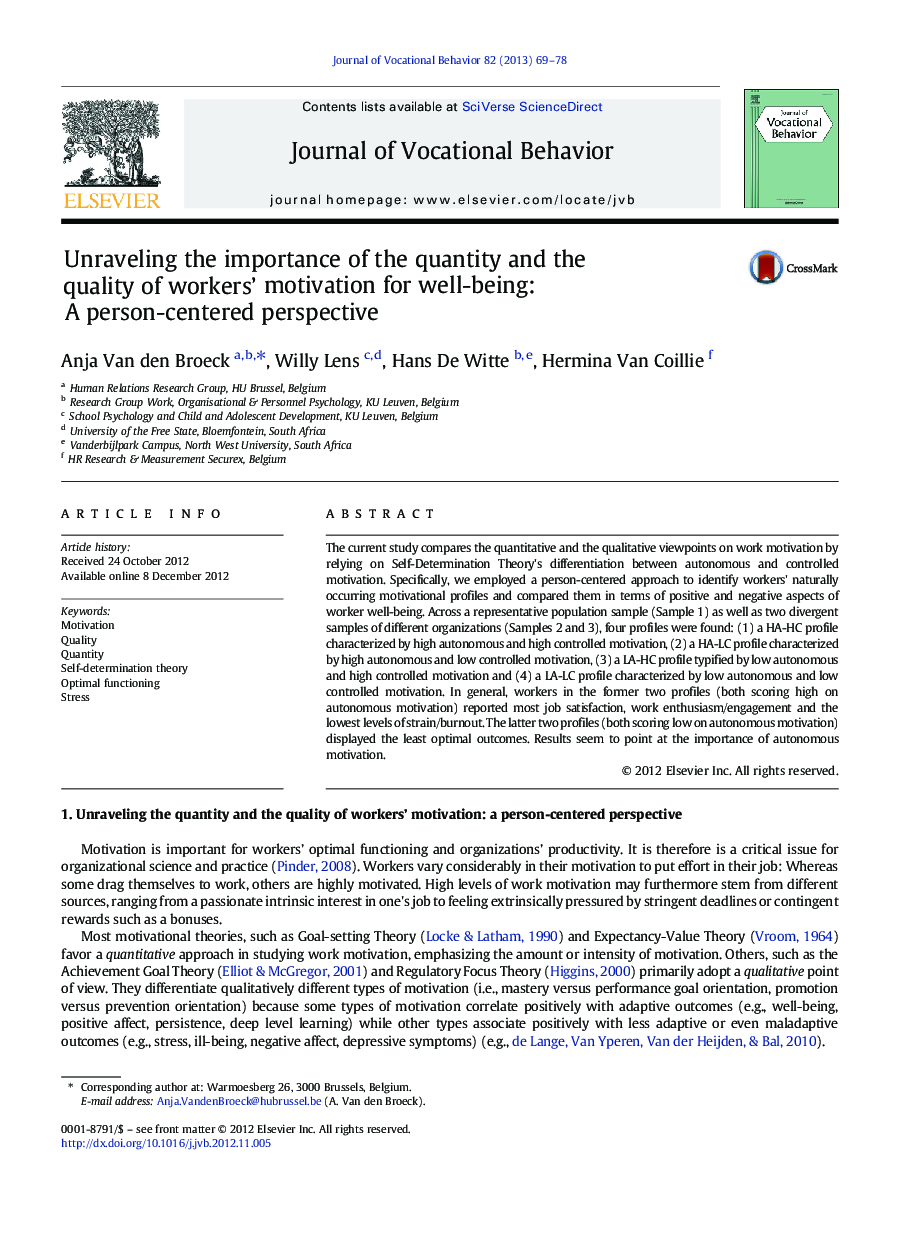| Article ID | Journal | Published Year | Pages | File Type |
|---|---|---|---|---|
| 887044 | Journal of Vocational Behavior | 2013 | 10 Pages |
The current study compares the quantitative and the qualitative viewpoints on work motivation by relying on Self-Determination Theory's differentiation between autonomous and controlled motivation. Specifically, we employed a person-centered approach to identify workers' naturally occurring motivational profiles and compared them in terms of positive and negative aspects of worker well-being. Across a representative population sample (Sample 1) as well as two divergent samples of different organizations (Samples 2 and 3), four profiles were found: (1) a HA-HC profile characterized by high autonomous and high controlled motivation, (2) a HA-LC profile characterized by high autonomous and low controlled motivation, (3) a LA-HC profile typified by low autonomous and high controlled motivation and (4) a LA-LC profile characterized by low autonomous and low controlled motivation. In general, workers in the former two profiles (both scoring high on autonomous motivation) reported most job satisfaction, work enthusiasm/engagement and the lowest levels of strain/burnout. The latter two profiles (both scoring low on autonomous motivation) displayed the least optimal outcomes. Results seem to point at the importance of autonomous motivation.
► We compare the quantitative and qualitative view on motivation. ► We use cluster-analysis to determine workers’ motivational profiles in three samples. ► Autonomous motivation is beneficial, irrespective of controlled motivation. ► Low controlled motivation is not necessarily detrimental.
